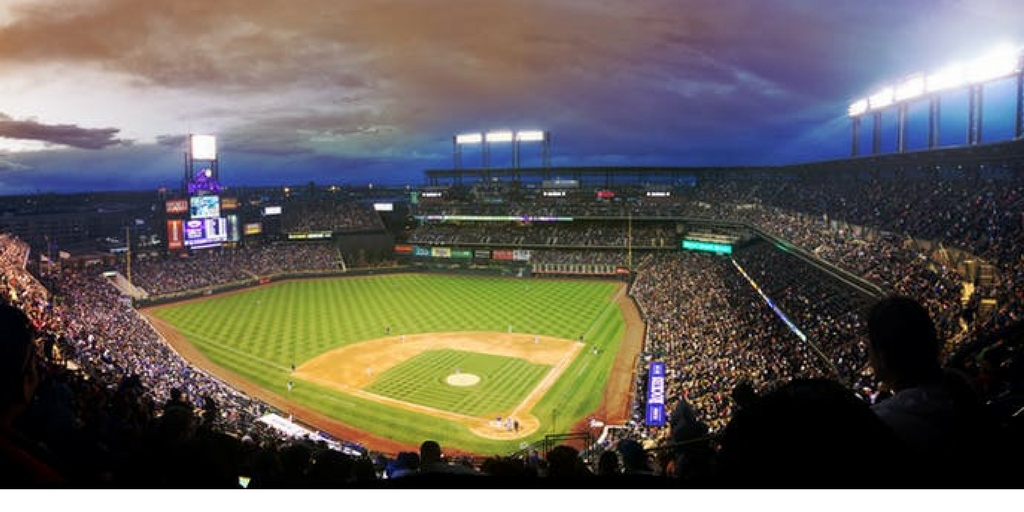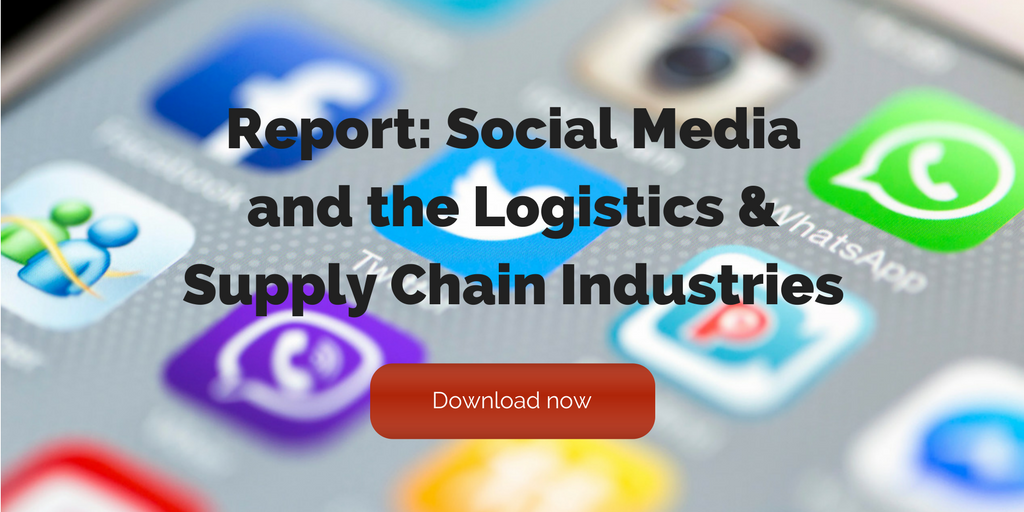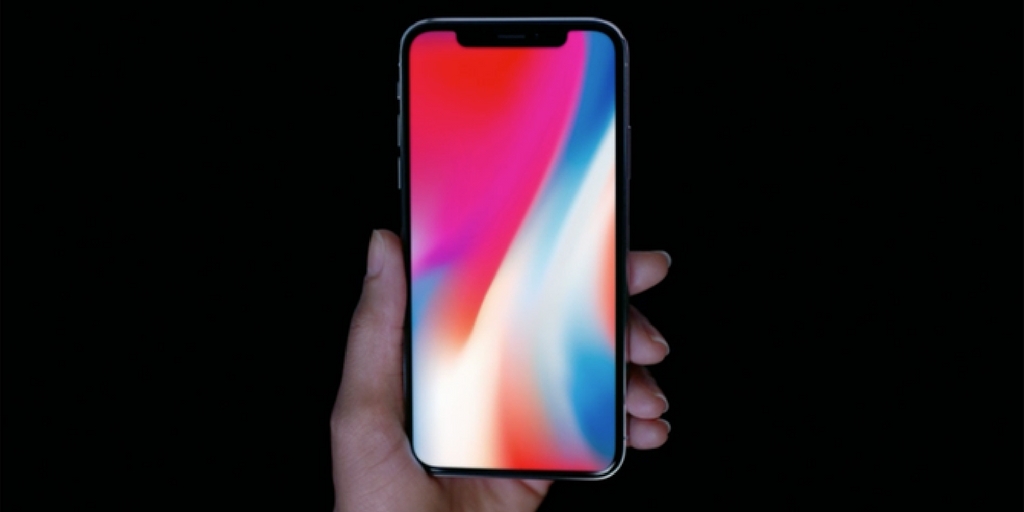
by Fronetics | Oct 25, 2017 | Blog, Content Marketing, Current Events, Marketing, Social Media
Also in October’s 2017 social media news: Vimeo is getting in the live streaming game, Instagram doubles its ad dollars, and YouTube will be taking over America’s favorite past time.
While the fall season has many of us wrapped up in blankets with flavored lattes, social media sites are spicing things up in lots of other ways.
Shopping for the holidays just got easier thanks to Instagram. YouTube is taking over Major League Baseball. Twitter is making those Throwback Thursdays way more convenient. And Facebook wants us all to know you can’t judge a book by its cover.
Instagram Expands Shopping Capabilities on the App
Instagram is teaming with Shopify to create the capability for brands and retailers to sell products directly from their Instagram accounts. Shoppers will be able to click on the experimental tagging links and purchase products directly through the app. Instagram is working overtime to have 500,000 retailers available for the upcoming holiday season, including Black Friday and Cyber Monday. “Discovery is at the heart of the Instagram experience. Together with Shopify, we are enabling new ways to turn discovery into exploration, allowing Instagrammers to find new things from brands they love and businesses to find opportunities to build relationships with these valuable customers,” Instagram said.
YouTube Named Presenting Sponsor of the World Series
YouTube is working overtime to promote its live TV service by becoming the presenting sponsor of the MLB World Series. Kelly Merryman, YouTube’s managing director of content partnerships in America, said in a statement that the deal serves to underscore the kinds of popular sporting events that are available on YouTube TV. The multi-tiered deal serves as the first national ad campaign for the video platform and will include national TV ads, on-air mentions during each game, in-stadium branding, and more.
LinkedIn Tests Geofilters for Events and Conferences
LinkedIn is testing the ability for users to tag events and conferences with location-based filters, taking a page from Snapchat. As part of the platform’s new native video tools, LinkedIn is giving conference attendees the opportunity to add dedicated event frames to the videos they create while attending such functions. The illustrations are styled like conference badges, with the user’s profile photo in the right-hand corner. The badges also indicate the user’s role (such as a speaker, panel member, or attendee).
Facebook Tests Publisher-Information Button on Articles
Facebook is experimenting with adding a publisher-information button to articles shared in your News Feed that will provide additional information about the author and context around the article without having to navigate away from the site. The test was born out of feedback from the Facebook Journalism Project, which the ‘Book launched to ensure the credibility of content shared by its users . By creating transparency around publishers and their content, Facebook says its helping users to make more informed decisions. “Helping people access this important contextual information can help them evaluate if articles are from a publisher they trust, and if the story itself is credible,” wrote Facebook.
Twitter Adding a Bookmarking Tool
Twitter has announced its plan to add a new bookmarking tool to its app. The “Save for Later” tool will allow users to save a tweet to read later on. The feature’s impending launch was first unveiled on Twitter itself, naturally, when Head of Product Keith Coleman announced that a new way to save tweets was in the works as a result of a company HackWeek project dubbed #SaveForLater.
Vimeo Launches Live Streaming Platform
After acquiring Lifestream, Vimeo is launching its own live-streaming platform called Vimeo Live. The new platform will allow users the ability to create, edit and distribute live events. The paid membership is promoting better viewer engagement, speedy support, and in-depth analytics to track your progress.
Instagram Grows by 100 Million Users in Four Months and Doubles Advertisers
Instagram is having a pretty good year. It has reached over 800 million monthly users, with 500 million daily active users. This is a 100-million-user increase since April. And the platform’s growth doesn’t stop there. Instagram also reported it has 2 million advertisers. “Time spent watching video on Instagram is up more than 80% year over year, while the number of videos produced per day has increased by 4x from last year. With the emergence of innovative mobile video formats, like Instagram Stories, business are finding more opportunities to connect with their audiences, whether on the go or in the moment,” wrote the Instagram Business Team on its Business Blog.
YouTube Debuts New Ad Tech Tools for Brands
YouTube is making it easier for advertisers to get in front of their target audiences. Marketers can now reach potential customers based on their searches and the videos they’re already watching with four new ad tech tools:
- Video Ad Sequencing, which allows advertisers to create a video funnel that moves users through a planned sequence of video ads;
- Director Mix, which automatically customizes video content for different audiences;
- Custom Affinity Audiences which allows advertisers to define audience targeting based on users’ YouTube searches;
- Neilsen’s Matched Panel Analysis, which allows advertisers to measure the impact of video alongside other Google campaigns on offline sales.
The video site is hoping to make it easier to create a relationship between what advertisers have to offer and the people that are interested in those offers.
Related posts:


by Fronetics | Oct 18, 2017 | Blog, Content Marketing, Leadership, Marketing, Social Media
Supply chain and logistics executives should be using their celebrity on social media to be the public face of their businesses and an extension of their brands.
Here at Fronetics, we talk a lot about the importance of a social media presence for supply chain and logistics businesses. Most companies use social media to build brand awareness, communicate with a target audience, and, of course, attract new leads and customers. It’s highly effective.
But I am a strong believer that executives should also be on social media, as themselves, representing their brands and establishing themselves as thought leaders in the industry.
With their relative celebrity, supply chain and logistics executives are uniquely positioned to attract a following of customers, prospects, potential talent, industry peers, and admirers. They can use social media to connect with these people, share their ideas and industry news, and become the human face of their brands. It amplifies the company’s social media efforts in a way brands can’t do themselves. After all, social media is about connecting with people.
It makes sense, right? But in reality, 61 percent of fortune 500 CEOs have no social presence whatsoever. It’s an enormous missed opportunity.
Think of what these 3 CEOs’ social media presence has done for their brands.
With almost 12 million Twitter followers, the founder and owner of Virgin Group was named the top CEO on social media. Branson insists on creating his authentic content — from funny, personal stories to pictures — himself, and his commitment to posting daily keeps followers engaged. The resulting dialogue and relationship with followers has helped elevate his personal brand and Virgin as well.
Co-founder, president and former chief editor of the Huffington Post, Huffington was an early adopter of social media as a marketing tool. She has used her success at Huff Post and her personal social media presence to increase visibility to her newer projects, including Thrive Global.
Musk has committed to being authentic and open about the ups and downs of his business ventures, and his followers have responded favorably with an almost cult-like following. His personal account’s audience is more than double the number of followers combined for his three companies. Taking a page from Apple’s play book, Musk has used the reveal of new Tesla models and Space X rockets to stir up a buzz about projects. These live stream reveals are flashy, yet cool and casual, and have garnered over a million views.
Supply chain and logistics executives killing social media
This is not to say that there are not some supply chain and logistics executives who are capitalizing on using their personal brands on social media. Here are some as an example:
- Kelli Saunders, Morai Logistics
- Peter Tirschwell, IHS Markit
- Hailey McKeefrey, EBN
Which executives do you follow on social media?
Related posts:

by Fronetics | Sep 26, 2017 | Blog, Current Events, Marketing, Social Media
Also in September 2017’s social media news: YouTube gets a new look, and LinkedIn adds a native advertising network.
With fall officially in swing, social media platforms have turned up the heat. During the month of September, Facebook has launched its original video content tab and begged music executives for the ability to download songs. YouTube reworked its mobile app and came out with a fresh, new design. LinkedIn introduced us to its new Audience Network. And Instagram just got easier to troll at work. Here’s this month’s social media news.
Facebook Watch Makes Its Appearance on Profiles
Facebook has officially rolled out its new Watch tab, which allows users to subscribe to original video content. The tab was available to a test audience in August, but is now open to all users in the U.S. on mobile, desktop and Facebook’s TV apps. Facebook is hoping to boost ad sales through the new content and create one more reason for people to continually check back in on their newsfeeds for content they can’t get anywhere else.
Apple Unveils iPhone X
On the heels of the iPhone 8 and iPhone 8 Plus release is the newest Apple must-have: the iPhone X. The X introduces a new wraparound screen and Apple’s cutting-edge technology, Face ID. Face ID is enabled by the TrueDepth camera and projects and analyzes more than 30,000 invisible dots to create a precise depth map of your face. This will allow users to access Apple Pay by simply looking into their screen. The phone also includes powerful new augmented reality features. At a press conference, the tech giant demonstrated high-fidelity visuals placed dynamically in the real world, viewable through the iPhone’s camera lens.
YouTube Unveils New Logo and Features on Mobile App
YouTube continues to evolve with its growing popularity. Recently, the video site came out with a sleek new design. The new logo and icon are cleaner, more flexible, and better designed for a multiscreen world. YouTube has also added speed up and slow down features to playback and the ability to browse new videos while viewing video content. YouTube is hoping these changes will continue to increase user engagement and usability.
Instagram Moving to Your Desktop
Instagram just launched instagram.com, allowing users to view Stories on their desktops. Soon, users will be able to create and post Stories to the website from their phones, as well. “Stories has quickly become an important part of the Instagram experience — over 250 million people use it every day to see what their friends are doing in the moment. Now we’re excited to bring stories to people who use Instagram on the web.”
LinkedIn Introduces New Audience Network
LinkedIn has launched its new LinkedIn Audience Network, “a native advertising network that enables you to reach even more professionals with your ads by placing your Sponsored Content on high-quality, third-party publishers across mobile and desktop.” The new network was created to help businesses increase their marketing footprint, cut budgets, and expand their content’s reach. LinkedIn assures marketers that it has “taken measures to ensure brand safety within [its] recently launched LinkedIn Audience Network,” such as vetting partner publishers to verify that they meet its advertising guidelines and regularly monitoring campaign activity on the network.
Twitter Adds Team Managements Feature
Now your colleagues can keep their Twitter passwords to themselves. The social media app just launched a new team management feature, called TweetDeck Teams, which allows multiple people to login to the same account without sharing passwords. The new feature divides users into three categories: owner, administrator, and contributor, and gives various levels of functionality to each category.
Facebook Artificial Intelligence Training Bots to Mimic Emotions
Facebook’s AI researchers are working to introduce the first robots that can replicate human emotion through subtle facial expressions. In newly released papers, the researchers discuss their overall success with their efforts and the affects this could have on videos in the future. These researchers are hoping the bots will one day improve the avatars in virtual reality.
Facebook Offers Hundreds of Millions for Music Rights
Facebook is offering up cash — and lots of it — to music producers and creators so users can legally include songs in videos they upload to the site. Reports indicate that Facebook has offered hundreds of millions of dollars to make the deal happen. Music owners have been negotiating with Facebook for months in search of a solution, and Facebook has promised to build a system to identify and tag music that infringes copyrights.
Related posts:


by Fronetics | Sep 7, 2017 | Blog, Content Marketing, Marketing, Social Media
When you are posting on social media could be as important as what you’re posting, and this CoSchedule study attempts to determine the best time to post.
Timing is everything. And that statement especially holds true when it comes to posting content to social media.
There’s no point in putting in the time and effort to create informative blog posts, inspirational tweets, or captivating Facebook posts if you’re not getting the most exposure you can out of your social media outlets.
That being said, there is ample data out there on the best times to post on Facebook, Twitter, LinkedIn, and Instagram. Earlier this year, CoSchedule looked at a combination of its own original data and more than a dozen studies on this very topic, from sources like Buffer and Quintly, and compiled the results to take the guess work out of when to post.
Here’s a breakdown of their results.
Best times to post on social media by network
Facebook
Most people are using Facebook around the clock, on their desktop and mobile devices. Unlike other sites that attract more attention during the work week, Facebook users are checking in at work and at home.
- The most optimal time to post is 1-4 p.m. Thursday through Sunday, specifically on Saturdays and Sundays between 12-1 p.m.
- Posts during the week had the highest clickthrough rate on Wednesdays at 3 p.m.
- Avoid weekends before 8 a.m. and after 8 p.m., when user numbers are significantly lower
Twitter
Much like Facebook, Twitter users are active on their mobile devices as well as their desktop computers. But they tend to treat Twitter like a revolving newsfeed, so downtime breaks — like during commuting hours and lunch — tend to see higher usage.
- Between 12-3 p.m. and 5-6 p.m. is the optimal time to tweet for the most exposure, which correlates with lunch and the evening commute.
- Weekday tweets have a higher chance of being retweeted with higher clickthrough numbers
- B2B tweets saw a 16% better performance during work hours, while B2C tweets saw a 17% better performance on weekends.
LinkedIn
Also known as the social media site for professionals, LinkedIn saw 25% of its users during weekdays and specifically, during work hours. Not as popular as some of its competitors, more than half of LinkedIn users visit less than once a week, so your posts need to deliver a clear message in short, informative posts.
- Not surprisingly, the posts with the highest views and clickthrough rates were Tuesdays through Thursdays from 7-8 a.m., 12 p.m. and 5-6 p.m., in direct correlation with the start and end of the work day.
- Some companies have seen a higher performance on Tuesdays between 10-11 a.m.
Instagram
More than half of Instagram users log on daily, but tend to use the mobile app in their free time. Posts for this site are image-driven and are often more creative and less data-heavy than other sites.
- In general, the best times to post are on Mondays and Thursdays, in the evenings or early mornings.
- Some companies have reported success on Mondays between 8-9 a.m., correlating with the morning commute.
Many people still play a guessing game when it comes to deciding the best time to post their content for the most impact. And though there is no magic formula for the most retweets or reposts, there is data to help guide you. Posting the right content, at the right time, can make the difference between getting valuable comments, shares, and clicks on your links, which translate to valuable new leads.
Related posts:


by Fronetics | Aug 29, 2017 | Blog, Content Marketing, Current Events, Marketing, Social Media
When it comes to social media news in August 2017, the words of Kanye West, “stronger, better, faster, stronger,” have never been truer.
August has seen a continued push to get more information to more people in real time. Pinterest is introducing mobile ads. YouTube is adding sharing and chat features to the app. Google is developing new software to rival Snapchat. And, of course, the social media giant Facebook is always working on new improvements to dominate its competitors.
Facebook Tests Custom Audiences Based on Interactions with Event Pages
Brands will soon have the ability to create custom audience groups based on visitors’ interactions with the brand’s event pages. Facebook has confirmed that brands will be able to choose custom audiences made up of users who responded to any event on their pages or to specific events, and they will also be able to include users who RSVPed as going, interested, or both. Though only in its testing phase, these initial companies have been able to create audience groups based on interactions within the past 180 days.
Google Developing Rival to Snapchat Discover Feature
Back in 2016, Snapchat introduced ‘Discover,’ which allowed users to view news in the form of Snapchat Stories. At the time, this new technology allowed social media to combine news and television in short videos. Now Google wants a piece of the action. Google is working to allow publishers the ability to create media-oriented content. “The new publisher technology, called ‘Stamp,’ represents an escalation in the competition between tech platforms for publisher partnerships and access to media content, which they need to drive user engagement,” writes Erik Sass for Media Post.
Pinterest Rolls Out Mobile Video Ads to All Advertisers
Initially introduced a year ago to a limited amount of Pinterest advertisers, now all advertisers will have the ability to create mobile video ads. Using auto-play, the new type of promoted videos will begin playing as soon as users scroll across a brand’s feed and will also auto-play in Pinterest’s search results. Jenny Chiu, head of partnerships at Pinterest, said in a blog post, “Your Promoted Video sparks into action the moment a Pinner scrolls across it in their feed — no need to hit play. They can just sit back and watch your video unfold. And unlike on other platforms, where ads interrupt people as they’re trying to enjoy posts from friends, on Pinterest, people are actually looking for videos that inspire them to give ideas a try.”
Twitter Tests New Feature that Allows Brands to Automate Their Promotional Tweets
Twitter is in the initial testing of having brands pay ($99) to have their tweets automatically promoted on its app. Brands can tweet as they normally would, and the social network will automatically promote some of those tweets, but brands cannot customize which tweets are promoted. Twitter will create bi-weekly reports that will include information on audience insights, user growth and new user engagement. Companies were able to sign up on Twitter’s homepage to try to land a spot in the beta testing, which is now completely full. Stay tuned to see if Twitter rolls out this new feature to all users.
LinkedIn Rolls Out Quick Access to Samsung Users
LinkedIn and Samsung have teamed up to create the ultimate user experience. Now Samsung Galaxy S8 and S8+ owners can have access to LinkedIn’s content and calendar experience. Using Bixby, Samsung’s digital assistant, users can easily access LinkedIn’s Trending Storylines that include top news stories and scheduling details through My Schedule notifications.
YouTube Adds Chat and Sharing Features to Mobile App
YouTube has been working on ways to make sharing videos easier than ever. With the newest app features, users can share videos directly through the mobile app, as well as chat with other viewers in real time. YouTube announced on its blog, “Not only can you share and receive videos in the app, you can also chat about them right on YouTube, reply with another video, invite others to the conversation, and more. We think it’ll make sharing easier, faster and more fun on your phone. And if you want to continue sharing videos through other apps, you can still do that too.”
Related posts:









